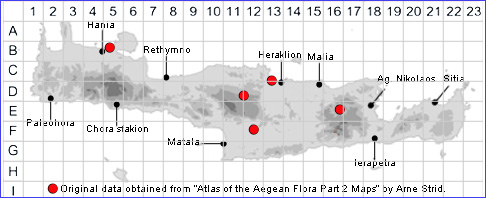SPECIES DESCRIPTION
MEDICAGO SATIVA subsp. FALCATA
Family and Genus:- See- LEGUMINOSAE/Subgen. MEDICAGO
Common Names:- Alfalfa, Lucerne.
Homotypic Synonyms:- Medica falcata, Medicago falcata, Medicago sativa
var. falcata.
Meaning:- Medicago (Gr) Median-grass, A name used by the Greek physician
and botanist Dioscorides, from a Persian name for lucerne, or medick.
Sativa (L) Planted, cultivated, not wild, sown.
Falcata (L) Sickle-shaped
General description:- Very variable, usually hairy perennial.
Stem:-
1) 20-70 cm. procumbent.
Leaves:-
1) Leaflets, obovate to almost linear, long-cuneate, dentate at the apex.
2) Stipules lanceolate to linear-awl-shaped (subulate) entire or dentate at the base.
Flowers:-
1) Peduncles longer than the subtending leaf.
2) Inflorescence a dense, 8-25 flowered raceme.
3) Corolla, bright yellow.
Fruit:-
1) Legume nearly straight, falcate or in a spiral of 1-3 turns with a hole through the
centre, glabrous, pubescent or glandular, not spiny; transverse veins
anastomosing and forming a transversely or radially elongated network.
Key features:-
1) Inflorescence a dense, 8-25 flowered raceme.
2) Legume, nearly straight to falcate.
Very variable, particularly in S. and S.E. Europe, where a number of distinct
species have been recognized. In view of the overall variation and the known
frequency of hybridization between M. sativa and M. falcata, two of the most
distinct taxa, it seems best to treat them all as subspecies. Hybrids between
subspecies with bluish and yellow corollas often have green or almost black
corollas. The best-known of these is subsp. falcata x subsp. sativa & M. x varia 1)
1) "Atlas of the Aegean Flora" Book1, Arne Strid 2016.
Habitat:- Cultivated and widely naturalised in field margins, orchards, along brooks,
etc. 0-1100 m.
Distribution:- A widespread and variable Euro-Siberian species. Limited distribution
and rare on Crete. But may well be under recorded.
Flowering time:- May-July.
Photos by:- Steve Lenton

